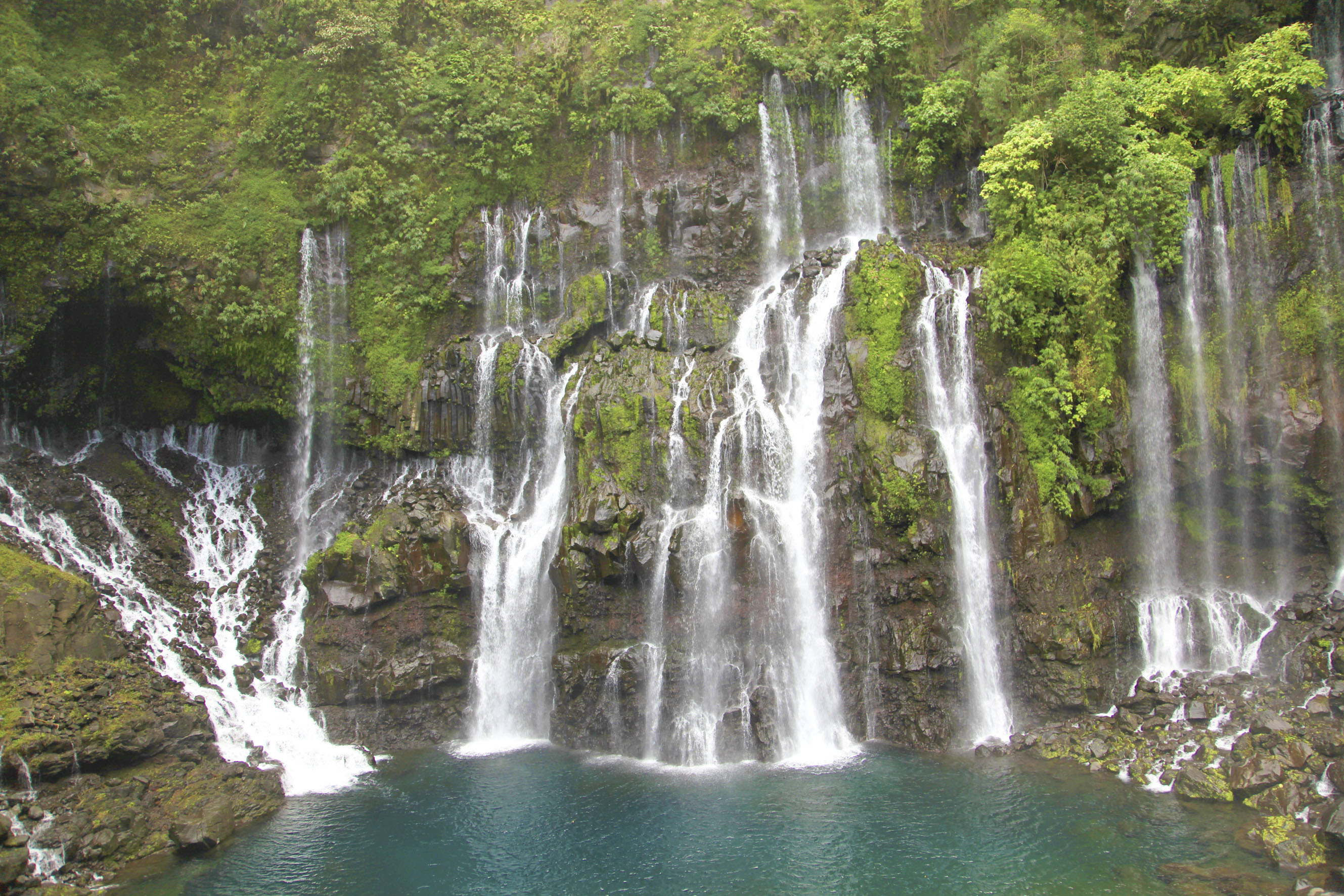PS#1: Réunion Island (FR)
This page is also available in French ![]()
Led by University of La Reunion


Description of the area
Reunion Island is a French volcanic island located near Madagascar, in the western Indian Ocean (Southern Hemisphere). Covering an area of 2,500 km², it has a steep relief with a narrow coastal strip (from 0 to 5 km, 210 km long) where 75% of the population is living. Reunion Island benefits from significant rainfall but unevenly distributed over time, with a dry season running from May to November, and in space with the southwestern area that receives 500 ml of rain per year. A related difficulty is that it is in this area that a large part of the economic activity is concentrated (due to the presence of port and tourist infrastructures). The island has 860 000 inhabitants with an unemployment rate at 21%, a poverty rate at 38% (+14 percentage points compared to mainland France) and a high cost of living (+37% for the food basket, compared to mainland France). Water withdrawals are 200 million cubic meters per year (140 for drinking water supply, 50 for agricultural irrigation and 10 for industry) with a high level of domestic consumption (194 m³ per year and per household).
Main water governance challenges
- Improve pricing policies performance (improper calibration) with local Stakeholders (public decision makers of Increasing Blocks Tariffs) Need of investment in infrastructures (800 M€ over the next ten years) and the maintenance of the related infrastructures require a sound revision of the tariff scales to secure a sustainable recovery of costs.
- Provide policy support to harmonise pricing policy since the management of the drinking water and sanitation services is now the responsibility of the inter-municipalities with 5 competent authorities against 24 ones before.
- Maintain water uses and avoid chronic deficit in the West and South areas of the Island (which is set to become more acute with the expected effects of climate change).
- Support water ecological function and fight against saline intrusions in coastal aquifers, most of the groundwater that is accessible today being on the coast.
- Maintain the quality of surface water that is degraded with just over 40% of the stations being in poor chemical condition. Besides, 30% of groundwater stations are classified as being in poor condition.
Key stakeholders
Local Water Agency (Office de l'Eau de La Réunion), DEAL (Local Institutional Body, representing the French Minister of Environment), Water and Biodiversity Committee (including environmental non-governmental associations), Departmental Council (Irrigation), EDF (Electricity production), Professional chambers (Agriculture and Industry), CESER Ile de La Réunion (Economic, Social and Environmental Council of Reunion Island), Local Water Utilities.
InnWater governance innovation and Solutions to be experienced
The economics tools (CGE and pricing micro-simulation models) will be used to improve:
- Local pricing policies through the quantification of the trade-offs, between the various objectives set by the European WFD (Affordability, Incentive effect of pricing, Equity, Economic Efficiency and Cost Recovery), with the design of water and sanitation tariff;
- Vertical dialogue between local stakeholders who operate at specific levels of competence to support Water Policy (including efficient and fair uses of water across sectors), Green Deal and SDGs, with special attention to local WEFE nexus;
- Horizontal dialogue between local stakeholders at the intermunicipal level (with the implementation, if necessary, of some corrective non-pricing measures);
- Citizen engagement by providing relevant and personalized information on each of the 5 major areas of performance of the pricing policy set by the WFD, Affordability and Equity in particular.
